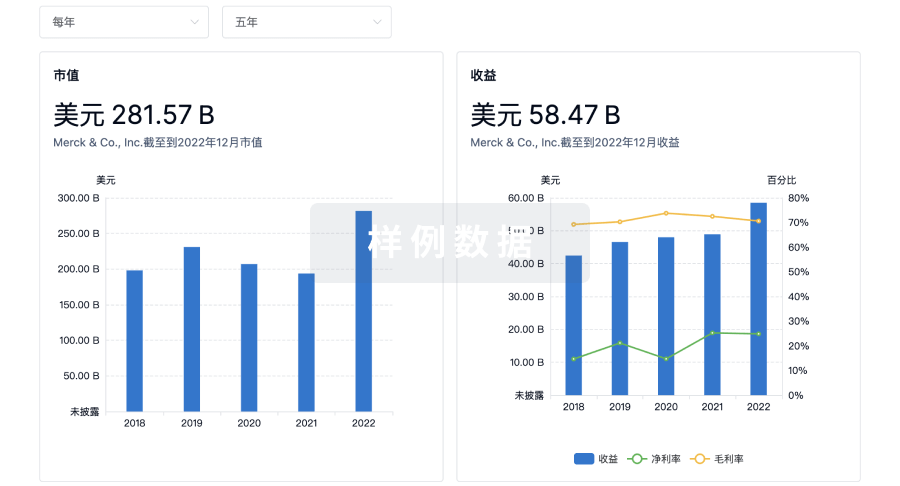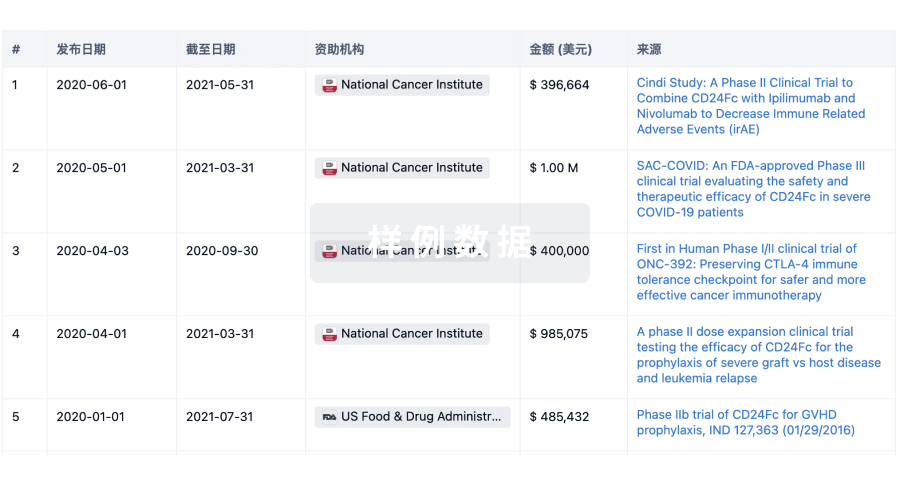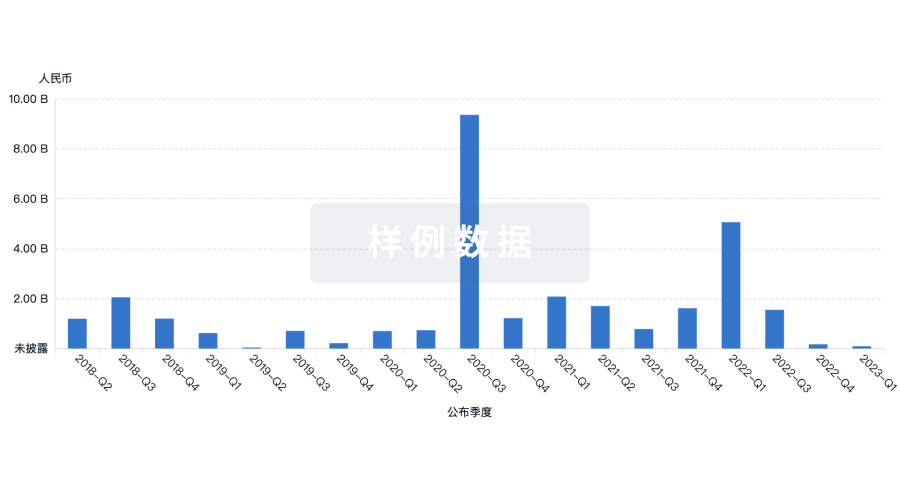预约演示
更新于:2025-05-07
Max-Planck-Institut für Kohlenforschung
更新于:2025-05-07
概览
关联
3
项与 Max-Planck-Institut für Kohlenforschung 相关的临床试验DRKS00024850
Risk communication on sepsis early detection and prevention - RICOSEP
开始日期2021-03-29 |
DRKS00010053
Pacebo-controlled, double-blind, randomised phase II study withcrossover-design investigating the modulatory effects of intranasalOxytocin on social cognition in patients with Autism-Spectrum-Disorder - Social Cognition-Autism-Oxytocin
开始日期2017-02-01 |
DRKS00004572
Treatment of non-fluent aphasia through melody, rhythm and formulaic language
开始日期2010-05-01 |
100 项与 Max-Planck-Institut für Kohlenforschung 相关的临床结果
登录后查看更多信息
0 项与 Max-Planck-Institut für Kohlenforschung 相关的专利(医药)
登录后查看更多信息
2,145
项与 Max-Planck-Institut für Kohlenforschung 相关的文献(医药)2025-05-01·Carbon
Structural details of small non-IPR fullerenes: Experimental and theoretical insights
作者: Dreschmann, Jens ; Schrader, Wolfgang ; Vetere, Alessandro
2025-05-01·IUCrJ
Solid-state calculations for iterative refinement in quantum crystallography using the multipole model
Article
作者: Patzer, Michael ; Lehmann, Christian W
2025-04-24·The Journal of Physical Chemistry Letters
Fine Tuning of the Rotational Speed of Light-Driven, Second-Generation Molecular Motors by Fluorine Substitution
Article
作者: Jónsson, Hannes ; Tambovtsev, Ivan ; Orlova, Tetiana ; Levi, Gianluca ; Schmerwitz, Yorick L. A. ; Nesterov, Pavel V. ; Darmoroz, Darina D.
4
项与 Max-Planck-Institut für Kohlenforschung 相关的新闻(医药)2024-03-18
A new report uncovers how hydrogen gas, the energy of the future, provided energy in the past, at the origin of life 4 billion years ago. Hydrogen gas is clean fuel. It burns with oxygen in the air to provide energy with no CO2. Hydrogen is a key to sustainable energy for the future. Though humans are just now coming to realize the benefits of hydrogen gas (H2 in chemical shorthand), microbes have known that H2 is good fuel for as long as there has been life on Earth. Hydrogen is ancient energy.
A new report uncovers how hydrogen gas, the energy of the future, provided energy in the past, at the origin of life 4 billion years ago. Hydrogen gas is clean fuel. It burns with oxygen in the air to provide energy with no CO2. Hydrogen is a key to sustainable energy for the future. Though humans are just now coming to realize the benefits of hydrogen gas (H2 in chemical shorthand), microbes have known that H2 is good fuel for as long as there has been life on Earth. Hydrogen is ancient energy. The very first cells on Earth lived from H2 produced in hydrothermal vents, using the reaction of H2 with CO2 to make the molecules of life.
Microbes that thrive from the reaction of H2 and CO2 can live in total darkness, inhabiting spooky, primordial habitats like deep-sea hydrothermal vents or hot rock formations deep within the Earth's crust, environments where many scientists think that life itself arose. Surprising new insights about how the first cells on Earth came to harness H2 as an energy source are now reported in PNAS. The new study comes from the team of William F. Martin at the University of Düsseldorf and Martina Preiner at the Max Planck Institute (MPI) for Terrestrial Microbiology in Marburg with support from collaborators in Germany and Asia.
In order to harvest energy, cells first have to push the electrons from H2 energetically uphill. "That is like asking a river to flow uphill instead of downhill, so cells need engineered solutions," explains one of the three first authors of the study, Max Brabender. How cells solve that problem was discovered only 15 years ago by Wolfgang Buckel together with his colleague Rolf Thauer in Marburg. They found that cells send the two electrons in hydrogen down different paths. One electron goes far downhill, so far downhill that it sets something like a pulley (or a siphon) in motion that can pull the other electron energetically uphill. This process is called electron bifurcation. In cells, it requires several enzymes that send the electrons uphill to an ancient and essential biological electron carrier called ferredoxin. The new study shows that at pH 8.5, typical of naturally alkaline vents, "no proteins are required," explains Buckel, co-author on the study, "the H-H bond of H2 splits on the iron surface, generating protons that are consumed by the alkaline water and electrons that are then easily transferred directly to ferredoxin."
How an energetically uphill reaction could have worked in early evolution, before there were enzymes or cells, has been a very tough puzzle. "Several different theories have proposed how the environment might have pushed electrons energetically uphill to ferredoxin before the origin of electron bifurcation," says Martin, "we have identified a process that could not be simpler and that works in the natural conditions of hydrothermal vents."
Since the discovery of electron bifurcation, scientists have found that the process is both ancient and absolutely essential in microbes that live from H2. The vexing problem for evolutionarily-minded chemists like Martina Preiner, whose team in Marburg focusses on the impact of the environment on reactions that microbes use today and possibly used at life's origin, is: How was H2 harnessed for CO2 fixing pathways before there were complicated proteins? "Metals provide answers,," she says, "at the onset of life, metals under ancient environmental conditions can send the electrons from H2 uphill, and we can see relicts of that primordial chemistry preserved in the biology of modern cells." But metals alone are not enough. "H2 needs to be produced by the environment as well" adds co-first author Delfina Pereira from Preiner's lab. Such environments are found in hydrothermal vents, where water interacts with iron-containing rocks to make H2 and where microbes still live today from that hydrogen as their source of energy.
Hydrothermal vents, both modern and ancient, generate H2 in such large amounts that the gas can turn iron-containing minerals into shiny metallic iron. "That hydrogen can make metallic iron out of minerals is no secret" says Harun Tüysüz, expert for high-tech materials at the Max-Planck-Institut für Kohlenforschung Mülheim and coauthor on the study. "Many processes in chemical industry use H2 to make metals out of minerals during the reaction." The surprise is that nature does this too, especially at hydrothermal vents, and that this naturally deposited iron could have played a crucial role at the origin of life.
Iron was the only metal identified in the new study that was able to send the electrons in H2 uphill to ferredoxin. But the reaction only works under alkaline conditions like those in a certain type of hydrothermal vents. Natalia Mrnjavac from the Düsseldorf group and co-first author on the study points out: "This fits well with the theory that life arose in such environments. The most exciting thing is that such simple chemical reactions can close an important gap in understanding the complex process of origins, and that we can see those reactions working under the conditions of ancient hydrothermal vents in the laboratory today."
2024-01-18
Helge Bastian, PhD, joins executive team as new CEO.
SAN DIEGO--(BUSINESS WIRE)-- iXCells Biotechnologies USA, Inc. (“iXCells”), a cell technology company specializing in providing cell-based products and drug discovery service solutions to the global academic, biotech, pharmaceutical, and rare disease communities, today announced the appointment of Helge Bastian, PhD, as the company’s new Chief Executive Officer.
The company’s co-founder and former CEO, Lynn Zhang, commented, “iXCells has undergone a remarkable transformation over the past few years adding talented scientists and commercial staff, building infrastructure for scalable growth, and expanding our innovative product and service offering while delivering the best possible service to our valued customers worldwide. To help drive our next phase of growth, we’re thrilled to warmly welcome Helge Bastian to our executive team. Helge brings to iXCells a wealth of entrepreneurial and intrapreneurial leadership experience across the life sciences and healthcare space in building businesses for small and large companies with a proven track record of value creation. Helge’s leadership will be pivotal for shaping the ongoing development and execution of iXCells’ growth in the years ahead.”
“I’m impressed with iXCells outstanding scientific and technology expertise and its pragmatic approach to leverage the highly enabling, Nobel Prize winning iPSC reprogramming and genome editing technologies in combination with its deep knowledge of differentiating mammalian stem cells and developing cell-based assays for generating highly predictive human disease models,” said Dr. Bastian. “I’m simply amazed by the team’s focus to provide best in class cell-based products and drug development and discovery service solutions to the market and equally excited with iXCells’ engagement and assistance to stakeholders from the rare disease community to support patients, clinics, and biopharmaceutical companies in their efforts to develop cell-based solutions and therapies to improve patient’s conditions and even save a patient’s life. I’m grateful for the opportunity to join iXCells at this important stage in the company’s development and looking forward to working with iXCells’ highly talented team to grow and establish the company as a customer and patient-centric leading provider of disease-relevant human cell models and trusted partner for our customers to accelerate the discovery & development of novel and more effective medicines and therapies.”
Dr. Bastian joins iXCells with a plethora of experiences from the life science and healthcare sector where he contributed to building, growing and revitalizing product, custom-product, and services businesses with a variety of portfolios of innovative and highly enabling technologies or new business models in RUO and regulated markets. Dr. Bastian served as a member of several executive leadership teams and held senior leadership positions with global responsibilities in Germany, Switzerland and USA, such as Thermo Fisher Scientific (VP & General Manager of Sample Preparation and Synthetic Biology businesses), Sigma-Aldrich (VP Global Marketing, Business Development and Strategy for Sigma’s innovative Research Biotech division), SGS (Executive VP/divisional CEO Life Science Services) and QIAGEN (VP, Molecular Diagnostics, VP Global Strategic Marketing, and VP PreAnalytiX, a QIAGEN / Becton Dickinson joint venture). In addition, Dr. Bastian led oncology focused Indivumed and M2GEN (now Aster Insights) as Managing Director & Chief Commercial Officer and CEO, respectively.
Dr. Bastian serves as a Board Member to enzymatic DNA-synthesis pioneer Molecular Assemblies (San Diego) and Strategic Advisor to functional personalized oncology and drug profiling company PreComb Therapeutics (Switzerland).
Dr. Bastian studied at the universities in Kiel, Goettingen and Munich, Germany, earned his diploma in biology/biochemistry from Georg-August University, Goettingen, and holds a Ph.D. in molecular & cell biology performed at the Max-Planck Institute for Biophysical Chemistry, Germany. Dr. Bastian is an alumnus from the Max-Planck-Network and the Columbia Business School.
Dr. Lynn Zhang will continue to serve on iXCells’ board of directors and assist with transitioning CEO leadership responsibilities in the coming months.
About iXCells Biotechnologies
Founded in 2014 and based in San Diego, CA, iXCells Biotechnologies is an innovative cell biology and cell technology company that provides preclinical drug discovery solutions with the focus on disease relevant cellular models enabling technologies and services to the academic, biotech and pharma communities to accelerate the pace of drug discovery. iXCells offers customers access to high quality primary and iPSC derived cells, custom iPSC services, functional bioassay development and drug screening. To learn more about this innovative leader within the preclinical iPSC sector, visit .
Follow iXCells Biotechnologies on LinkedIn, Twitter, and on YouTube.
View source version on businesswire.com:
Contacts
Wayne E. Vaz
Corporate Development & Commercial Operations
wayne.vaz@ixcellsbiotech.com
Source: iXCells Biotechnologies USA, Inc.
View this news release online at:
高管变更
2023-04-20
McCarthy’s experience and network will help identify early-stage biotech companies developing sustainable solutions in agriculture, food, chemicals, and materials
New partner bolsters Sofinnova’s continuing expansion and pioneering role in environmental impact through biotech investments
PARIS--(BUSINESS WIRE)-- Sofinnova Partners (“Sofinnova”), a leading European life sciences venture capital firm based in Paris, London, and Milan, announced the appointment of Mary McCarthy as Partner at Sofinnova Partners, joining the growing Sofinnova Industrial Biotech Strategy team. She will use her extensive experience and network to help identify the most promising early-stage companies developing biotech-enabled sustainable solutions in agriculture, food, chemicals, and materials. The Sofinnova Industrial Biotech Strategy has made 24 investments to date and is actively investing out of its third fund of €175M.
This press release features multimedia. View the full release here:
Mary McCarthy (Photo: Business Wire)
Before joining Sofinnova Partners, Mary was a Partner at Brightlands Venture Partners (BVP) where she was the Fund Manager of the BVP Renewable Chemistry Fund and served on various boards. With over 24 years in chemistry and materials, Mary has occupied various roles in the sector: She was CEO of a start-up developing materials for the circular economy and worked at SABIC for 15 years, where she held various functions in R&D, HR, Change Management, and Corporate Venturing.
Michael Krel, Partner at Sofinnova Partners, said: "Mary is a perfect addition to our team with broad experience in the venture, start-up and corporate world. This appointment is another step forward in the growth of our industrial biotech strategy; it bolsters our commitment to identifying and supporting early-stage companies that have the potential to develop innovations with strong environmental impact."
Joško Bobanović, Partner at Sofinnova Partners, said: "Mary joins our team at an exciting time of growth and evolution of the industrial biotech ecosystem. With her track record of successful investments, Mary will strengthen our capacity to meet the increasing demand for innovative and sustainable solutions for the environment."
Mary McCarthy, Partner at Sofinnova Partners, said: "I'm very pleased to join Sofinnova Partners. The Industrial Biotech team is a recognized pioneer in the sector with a wealth of accumulated knowledge. I am looking forward to contributing to the team’s mission of finding deeptech solutions with strong environmental impact that can truly change the world for the better."
Antoine Papiernik, Chairman and Managing Partner at Sofinnova Partners, said: "Mary’s appointment strengthens Sofinnova’s leadership position in industrial biotech and reinforces the work this team has been doing for over a decade in forging a strong platform through investments in sustainability. Industrial biotech is a crucial pillar for the future of our firm, and Mary’s extensive network, ability to recognize disruptive technology, and genuine commitment to make the global economy more sustainable will undoubtedly contribute to accelerating this trajectory."
Mary holds a PhD in chemistry from University College Dublin, Ireland and held postdoctoral fellowships at the University of Amsterdam, the Netherlands and the Max Planck Institute für Kohlenforschung, Germany.
About Sofinnova Partners
Sofinnova Partners is a leading European venture capital firm in life sciences, specializing in healthcare and sustainability. Based in Paris, London and Milan, the firm brings together a team of professionals from all over the world with strong scientific, medical and business expertise. Sofinnova Partners is a hands-on company builder across the entire value chain of life sciences investments, from seed to later-stage. The firm actively partners with ambitious entrepreneurs as a lead or cornerstone investor to develop transformative innovations that have the potential to positively impact our collective future.
Founded in 1972, Sofinnova Partners is a deeply established venture capital firm in Europe, with 50 years of experience backing over 500 companies and creating market leaders around the globe. Today, Sofinnova Partners has over €2.5 billion under management. For more information, please visit: sofinnovapartners.com.
View source version on businesswire.com:
Contacts
Bommy Lee
Head of Communications
Sofinnova Partners
blee@sofinnovapartners.com
+33 (0) 6 47 71 38 11
North America
RooneyPartners LLC
Kate Barrette
kbarrette@rooneypartners.com
+1 212 223 0561
United Kingdom
Optimum Strategic Communications
Hollie Vile
sofinnova@optimumcomms.com
+44 (0) 20 3922 0900
France
StrategiesImage
Anne Rein
anne.rein@strategiesimage.com
+33 (0) 6 03 35 92 05
Italy
Havas PR Milan
Pierluigi Cavarai
pierluigi.cavaraiext@havaspr.com
+39 (0) 392 77 999
Source: Sofinnova Partners
Smart Multimedia Gallery
Photo
Mary McCarthy (Photo: Business Wire)
Photo
Industrial Biotech Team (Photo: Business Wire)
Logo
View this news release and multimedia online at:
高管变更
100 项与 Max-Planck-Institut für Kohlenforschung 相关的药物交易
登录后查看更多信息
100 项与 Max-Planck-Institut für Kohlenforschung 相关的转化医学
登录后查看更多信息
组织架构
使用我们的机构树数据加速您的研究。
登录
或

管线布局
2025年09月14日管线快照
无数据报导
登录后保持更新
药物交易
使用我们的药物交易数据加速您的研究。
登录
或

转化医学
使用我们的转化医学数据加速您的研究。
登录
或

营收
使用 Synapse 探索超过 36 万个组织的财务状况。
登录
或

科研基金(NIH)
访问超过 200 万项资助和基金信息,以提升您的研究之旅。
登录
或

投资
深入了解从初创企业到成熟企业的最新公司投资动态。
登录
或

融资
发掘融资趋势以验证和推进您的投资机会。
登录
或

Eureka LS:
全新生物医药AI Agent 覆盖科研全链路,让突破性发现快人一步
立即开始免费试用!
智慧芽新药情报库是智慧芽专为生命科学人士构建的基于AI的创新药情报平台,助您全方位提升您的研发与决策效率。
立即开始数据试用!
智慧芽新药库数据也通过智慧芽数据服务平台,以API或者数据包形式对外开放,助您更加充分利用智慧芽新药情报信息。
生物序列数据库
生物药研发创新
免费使用
化学结构数据库
小分子化药研发创新
免费使用